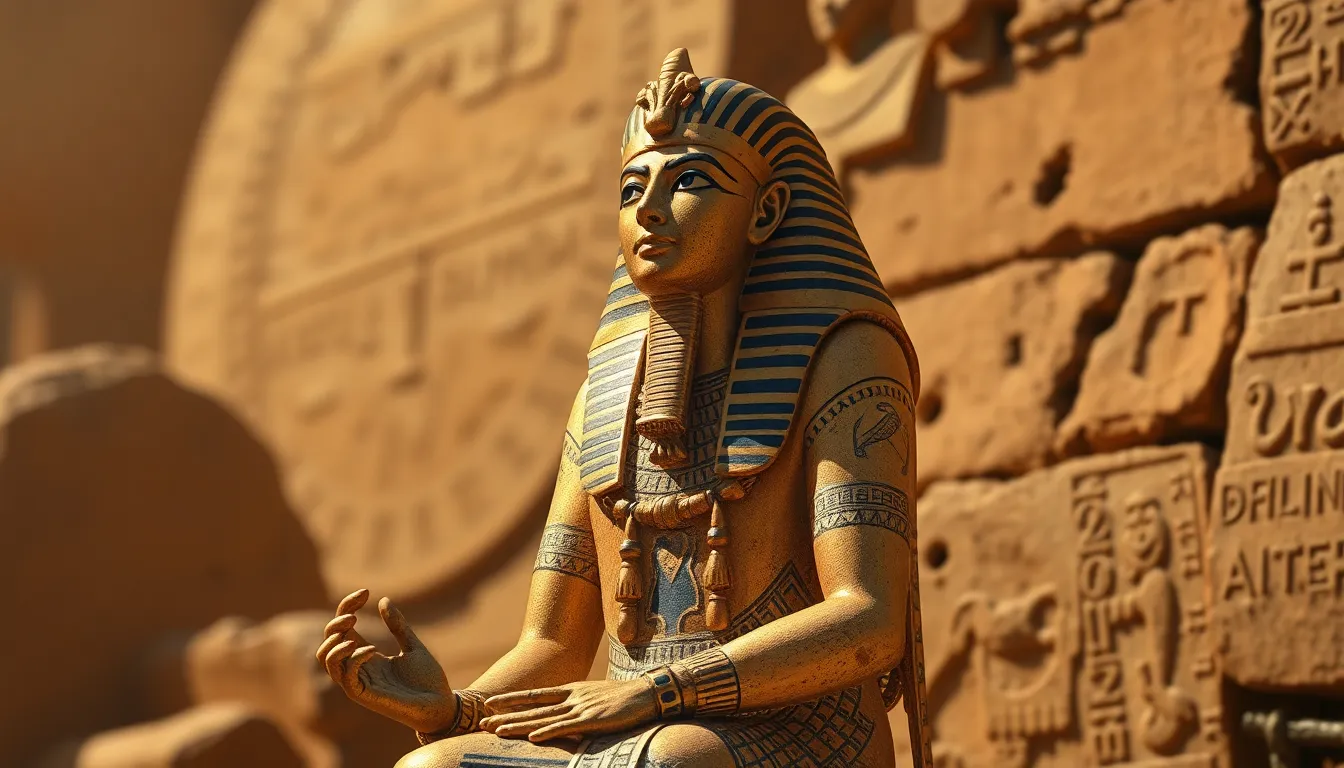Ancient Egyptian Prayer: Communicating with the Divine
I. Introduction to Ancient Egyptian Prayer
In Ancient Egyptian culture, prayer was a vital means of connecting with the divine. It served not only as a personal expression of faith but also as a communal activity that reinforced social and spiritual bonds. The Egyptians believed that through prayer, they could communicate their needs, express gratitude, and seek guidance from their gods.
The purpose of prayer in this context encompassed a wide range of intents, from seeking favor and protection to ensuring harmony with the cosmic order. Prayer was seen as a powerful tool that could influence the divine realm and manifest desired outcomes in the material world.
II. The Role of Deities in Egyptian Prayer
The Egyptian pantheon was rich with deities, each embodying different aspects of life, nature, and the cosmos. Key gods and goddesses included:
- Ra: The sun god, representing creation and life.
- Osiris: The god of the afterlife and resurrection.
- Isis: The goddess of motherhood and magic.
- Horus: The sky god, often associated with kingship.
- Anubis: The god of mummification and the afterlife.
The relationship between humans and the divine was characterized by mutual dependence. The Egyptians believed that the gods required offerings and worship to maintain balance in the universe, while humans sought the gods’ favor for protection, prosperity, and guidance.
III. Types of Prayers in Ancient Egypt
Prayers in Ancient Egypt could be categorized into two main types: personal prayers and communal prayers.
- Personal Prayers: These were individual supplications made to deities, often expressing personal desires, grievances, or gratitude.
- Communal Prayers: These involved collective worship, often performed during festivals or significant public events, reinforcing communal identity and shared beliefs.
Additionally, ritualistic prayers were integral to religious ceremonies. These prayers were often recited in specific contexts, such as during funerals, temple rites, or seasonal festivals, and were designed to invoke the presence and favor of the gods.
IV. The Language of Prayer
The language of prayer in Ancient Egypt was deeply intertwined with their writing system. Hieroglyphs were not just a means of communication but were considered sacred symbols that held power in themselves. Many prayers were inscribed on temple walls, papyrus scrolls, and tombs.
Common phrases and expressions found in prayers often included invocations of divine names, requests for blessings, and declarations of faith. For example:
- “Oh Ra, grant me your light.”
- “Isis, protect me in my journey.”
- “Osiris, may I find peace in the afterlife.”
V. Rituals and Offerings Accompanying Prayer
Rituals played a crucial role in enhancing the efficacy of prayer. Typical rituals included:
- Lighting incense and candles to purify the space.
- Reciting specific prayers or hymns dedicated to the deities.
- Performing symbolic gestures, such as raising hands in supplication.
Offerings were also fundamental to the prayer process. Egyptians would present food, drink, flowers, and other valuable items to the gods as a way to honor them and express gratitude. The act of giving was believed to strengthen the bond between the worshiper and the divine, ensuring that prayers would be heard and answered.
VI. The Role of Priests and Priestesses
In Ancient Egypt, priests and priestesses were the intermediaries between the people and the gods. Their role in facilitating prayer was essential, as they were responsible for conducting rituals and maintaining the temples.
The training and responsibilities of priests included:
- Studying sacred texts and rituals.
- Performing daily offerings and prayers in temples.
- Interpreting the will of the gods through divination.
Priests were seen as pure and holy individuals, often required to adhere to strict codes of conduct to ensure they remained worthy of serving the divine.
VII. The Afterlife and Prayer
Prayer held a significant connection to Ancient Egyptian beliefs about the afterlife. Egyptians believed that the soul continued to exist after death, and prayer was a means of ensuring a safe passage to the afterlife and favorable judgment by the gods.
Examples of prayers for the deceased included:
- Prayers for protection and guidance in the afterlife.
- Prayers recited during the funeral rites to assist the deceased’s journey.
- Offerings placed in tombs to provide for the deceased in the next life.
VIII. Conclusion: The Legacy of Ancient Egyptian Prayer
The practices of Ancient Egyptian prayer have left a lasting legacy on religious traditions that followed. Elements of their prayer rituals and the symbolism associated with their deities can be seen in various later religions.
Today, prayer remains a fundamental aspect of human spirituality, echoing the beliefs and practices of ancient cultures. The enduring importance of prayer in connecting with the divine reflects a universal human desire for guidance, connection, and understanding beyond the material world.




